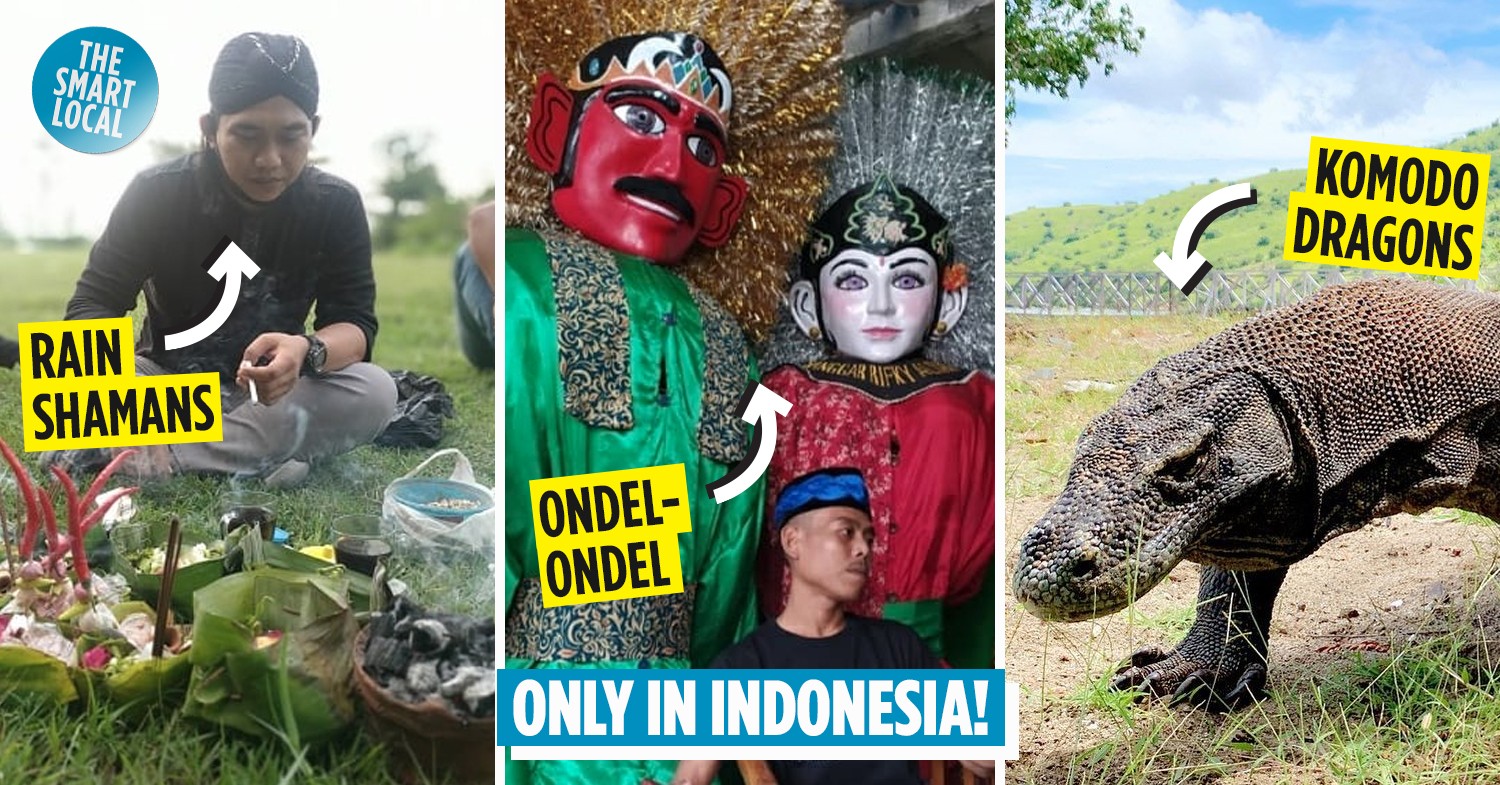People and things found only in Indonesia
For many people, the first thing that comes to mind when they think of Indonesia is Bali and its tropical beaches. However, Indonesia has a lot more to offer – such as our many unique beliefs, foods, and cultures, from our love of giant puppets for wedding celebrations to snake fruits and even beehives for lunch, to name a few.
So here are 10 quirky and unique people and things that you’ll only be able to find in Indonesia – try spotting them on your next trip.
1. Pawang Hujan – rain shamans
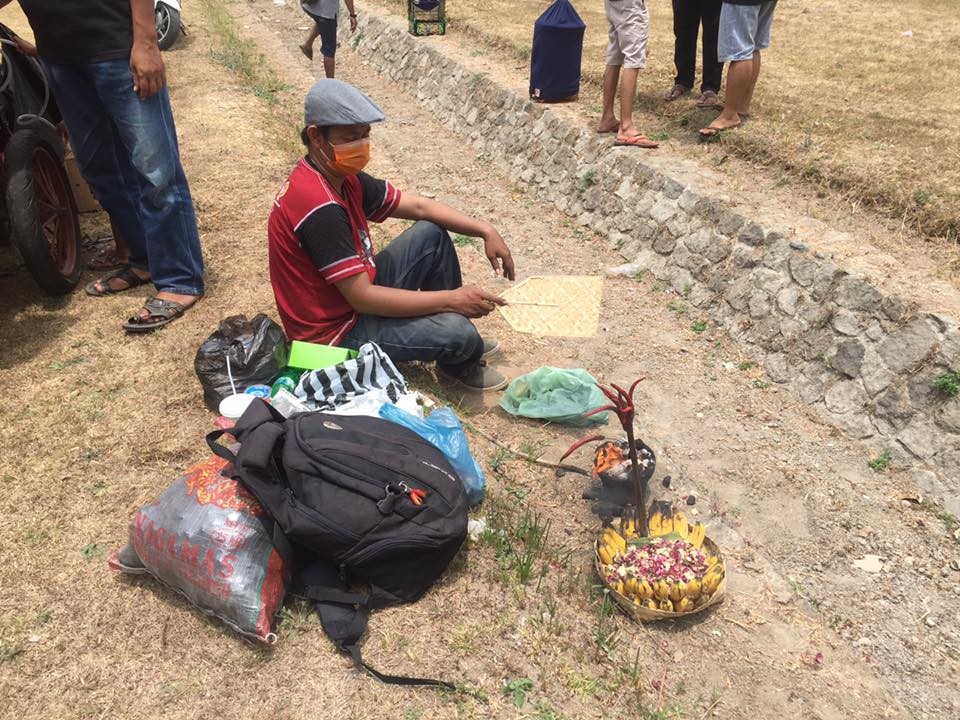
A local rain shaman conducting prayers
Image credit: Omkicau
A pawang hujan or rain shaman is typically a man believed to have powers to stop or delay rains from pouring, literally. The use of pawang hujan was derived from the Javanese cultural belief in the ability of these shamans to control nature through prayers, with help from their ancestors through the spiritual world. Today, pawang hujan are often hired to help with outdoor events, such as weddings, parties, death processions, and even sporting events such as football matches.
Some pawang hujan work their magic by reading mantras and the use of objects such as oil and flower petals- as an offering to the gods, and cigarettes which they puffed through a traditional curved pipe called cengklong.
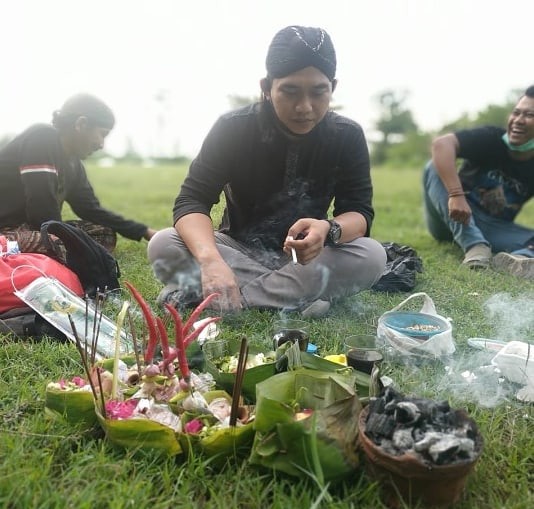
A rain shaman in action
Image credit: @kaktopan
Although it may sound bizarre to foreigners and locals alike, pawang hujan is considered a profession in Indonesia, and today, some offer to teach their knowledge to anyone willing to learn. While the efficacy rate is debatable, many locals still believe in the practice, and use their assistance for their events to go smoothly without disruption. The price for hiring a rain shaman starts from Rp. 2,000,000 (~USD138.34).
2. Botok tawon – boiled beehives served in traditional chilli paste
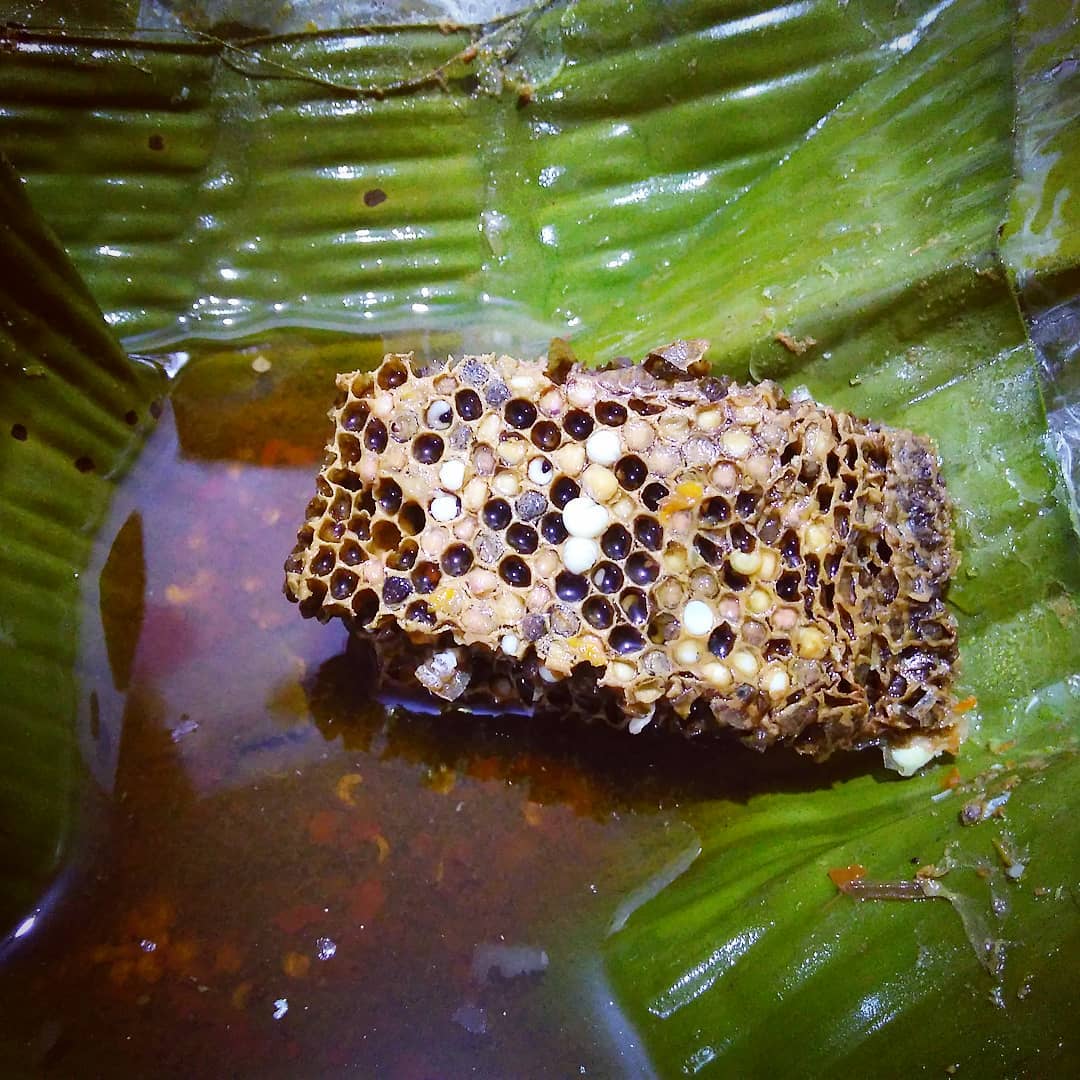
Botok tawon served on a banana leaf
Image credit: @eatographer
A traditional dish from Banyuwangi, East Java, botok tawon literally translates to “beehive”. This rare and unique dish involves a beehive being boiled and steamed before it’s served.
It is mixed with coconut seasoning, chilli, and onions to give it a traditional taste and served on a banana leaf like many other Indonesian dishes. You can eat it on its own or with rice. Although it may look crunchy, it actually has a soft texture due to the boiling and steaming.
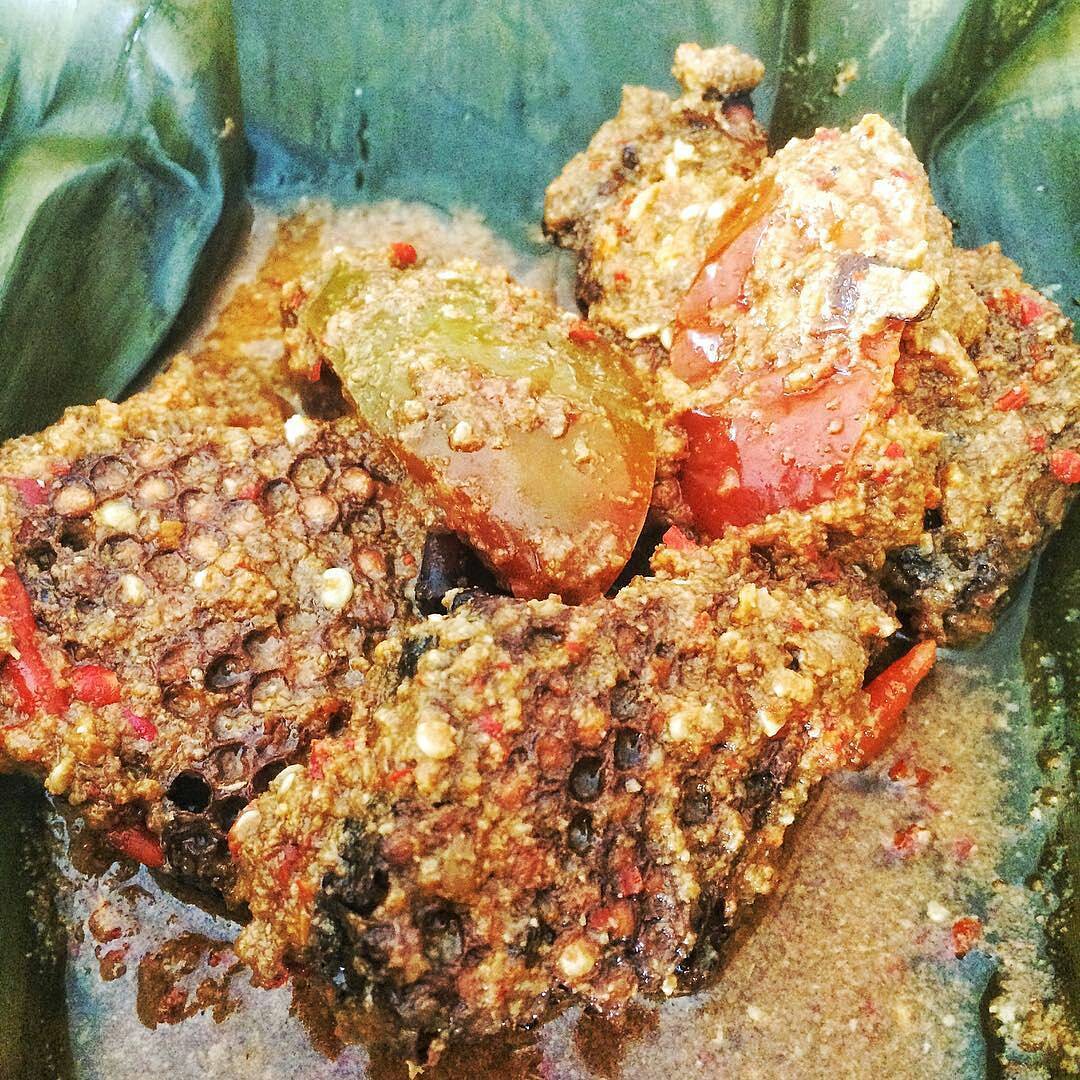
Image credit: @deliciousbanyuwangi
Apart from it being unique, this dish is also not easily available, and usually only found in villages in East Java that still rear honey bees. Many locals there believe eating this dish can give a person stamina and improve their overall health. The cost of a single plate of botok tawon starts from Rp. 10,000 (~USD 0.69).
3. Ondel-ondel – giant Betawi puppets
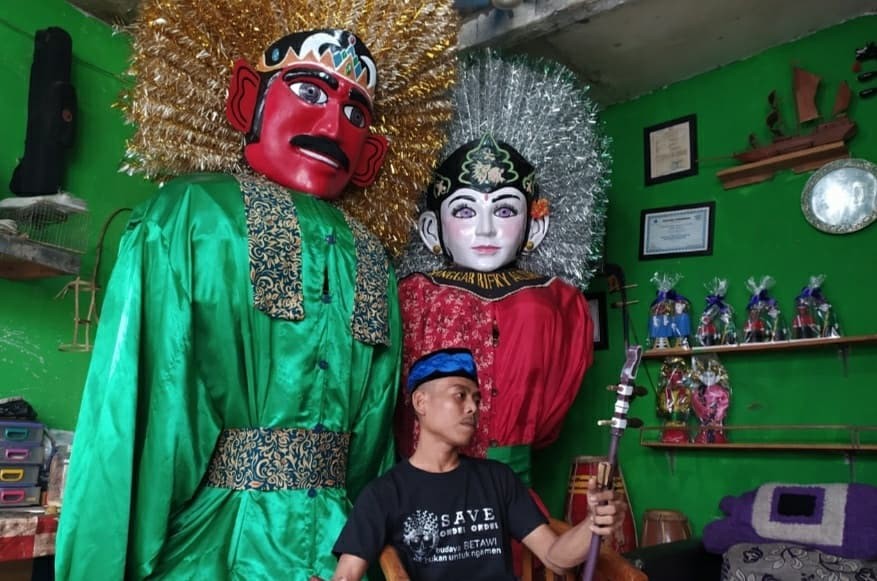
Image credit: @senibudayabetawi
Ondel-ondel are giant puppets from the Betawi culture that are used for livening up festivals, welcoming guests-of-honor, and even to ward off evil spirits. You will always see ondel-ondel in pairs, representing a male and a female. The male typically has its face painted red, whereas the female has its face painted white. The body of an ondel-ondel is usually about 2.5 meters tall and constructed using bamboo, making it light and easy for the puppeteer to maneuver from inside.
Dressed in traditional Betawi outfits, ondel-ondel also feature traditional headdresses known as kembang kelapa which means “coconut flower”, and which are made from coconut leaves that are shredded and then wrapped in colourful paper. The colourful paper used for the headdress symbolises the various cultures present in Indonesia.
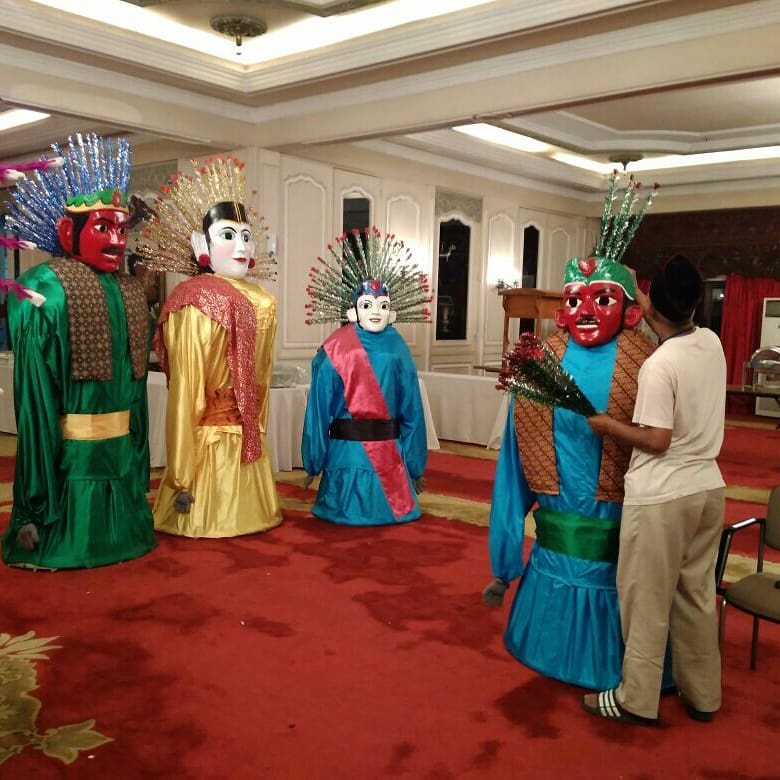
Image credit: @dekorasi_betawi
One of the Indonesian folk performance icons that has survived modernization, ondel-ondel frequently star in performances at weddings and other cultural festivities today, becoming icons of Jakarta for their long-standing history and unique representation of the Betawi culture.
However, in recent years, ondel-ondel have been used by street buskers as a way to earn money, but the practice of using ondel-ondel for street busking is in the process of being outlawed by the local government.
4. Liwetan – communal dining on banana leaves
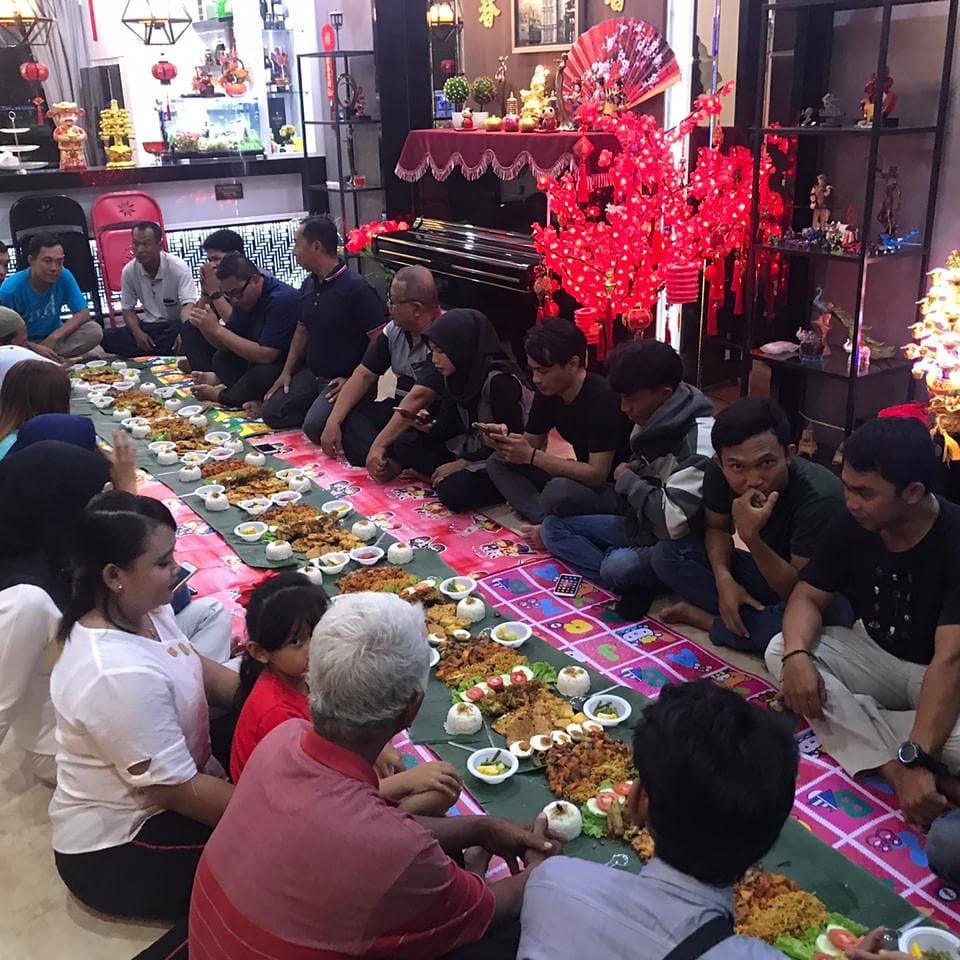
Image credit: @engsresto
Liwetan is a traditional Javanese way of communal dining where the food is served on a long banana leaf without the use of cutlery. The food served usually includes rice, tofu, tempe (soy bean patty), chicken, vegetables, and sambal, though liwetan is not known for its food but rather for the way it is served.
Diners usually gather around and eat on the floor, which back in the day, was a way of building camaraderie and brotherhood between families and neighbours. While the symbolism of liwetan still remains the same, today it is used mainly to entertain guests, or as a team-building activity.
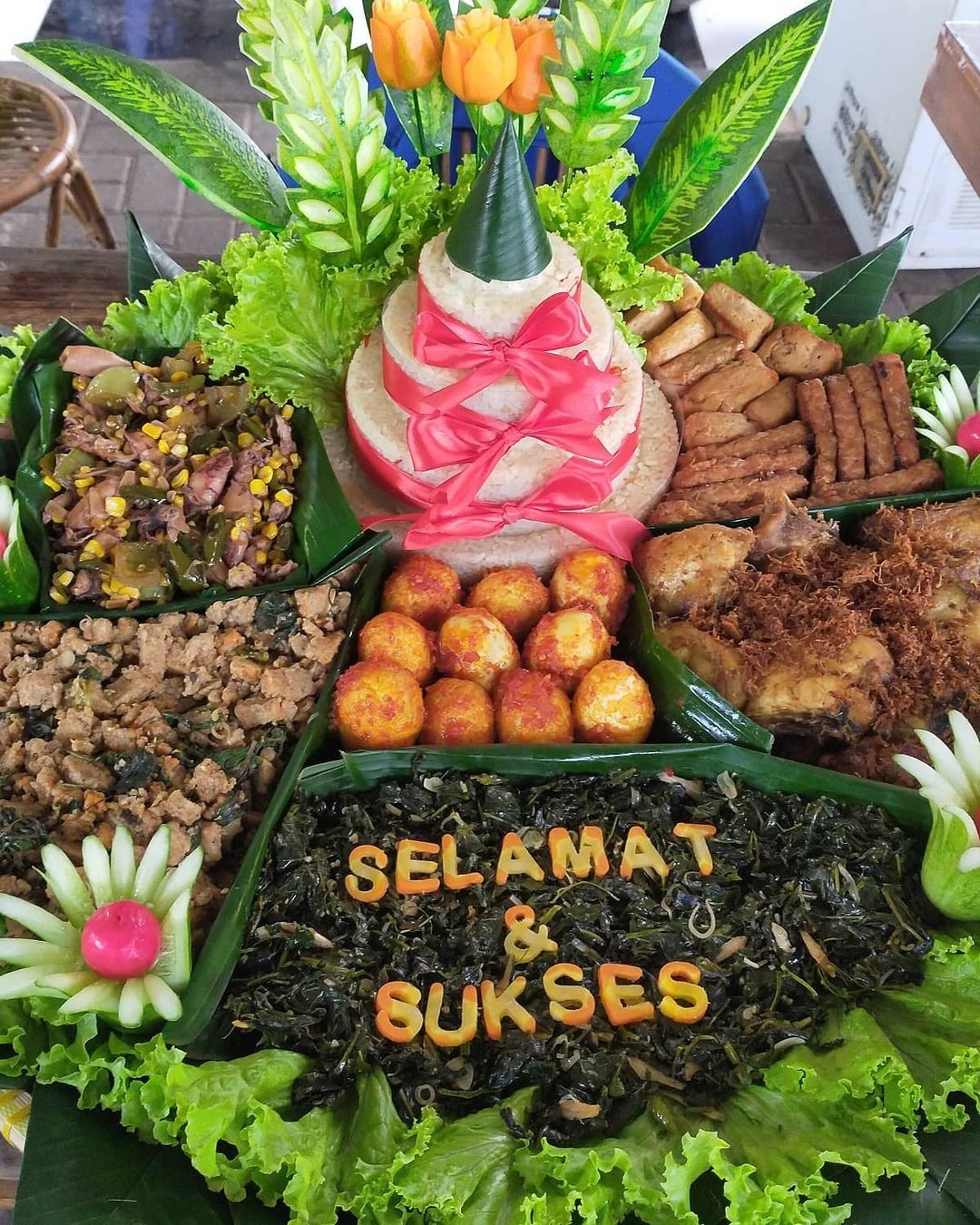
Traditional liwetan food – tempe, tofu, fried chicken, rice, raw vegetables, and sambal eggs.
Image credit: @warung.emak.soeboer
This style of communal dining is also popular in the Philippines, and is called kemayan or boodle fights there. However, what distinguishes the two is the absence of pork in liwetan, as opposed to kemayan that includes pork and other meat-based foods such as seafood.
5. Dukun – Javanese sorcerers
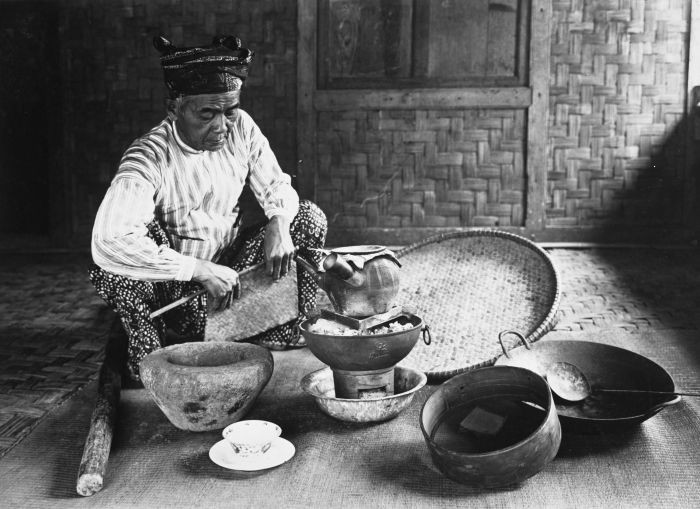
A dukun at work in the Dutch colonial era in the early 1900s.
Image credit: Collectie Stichting Nationaal Museum van Wereldculturen (Nationaal Museum van Wereldculturen, the Netherlands)
A dukun is a sorcerer believed to have supernatural powers, and takes on many roles as a traditional healer, spirit medium, and even a master of black magic. Dukuns’ practices actually come from the kejawen belief system that is indegenous to Java, and which involves animism, ancestor worship, and shamanism.
Usually dukuns wear dark coloured or batik clothing with a turban to protect their heads. Their typical rituals usually involve meditation and the recitations of mantras on a mountain, waterfall, or cemetery, away from crowds of people.
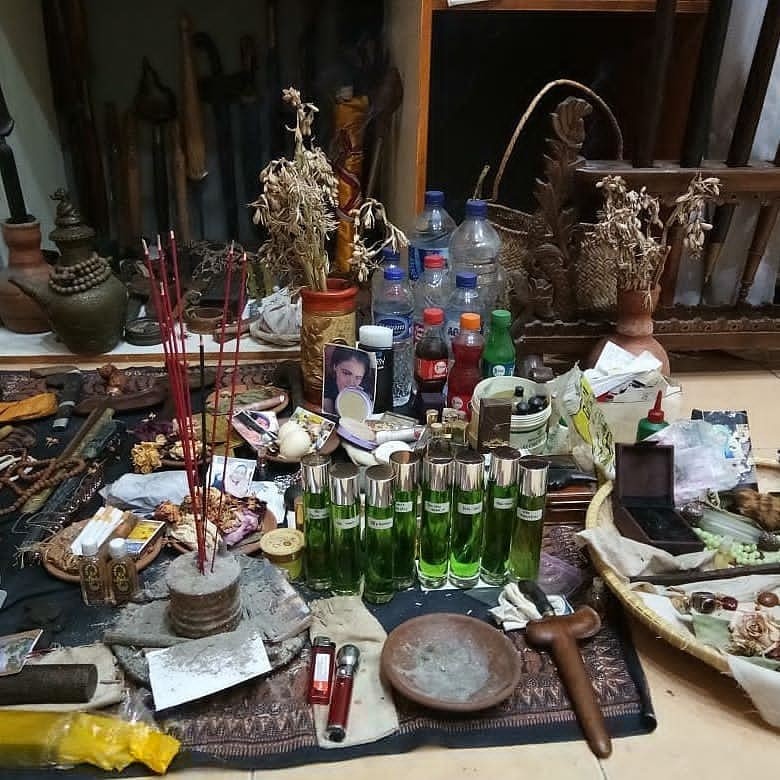
The many offerings made by dukun to spirits and ancestors
Image credit: @mbah_tungong_sutoyo11
Dukuns have long been a part of Indonesian culture, and in common practice, a dukun is consulted when a person has paranormal-related personal issues. In many local horror films, the dukun is portrayed as an exorcist and a master of black magic who helps an individual be released from an evil spirit’s possession, or help people achieve what they desire through offerings and sacrifices.
6. Istinja-friendly urinal design

Image adapted from Kohler and Somia Customer Experience
Muslims around the world are familiar with the mandatory process of wudhu that is done before praying, and often rely on public toilets when they are not at home to complete that process. However, urinating without cleaning oneself is considered to invalidate one’s wudhu, so many perform this act of cleaning oneself after urinating or defecation that is called istinja.

Image credit: Markus Spikse/Pexels
Any form of contact with splashes or droplets of urine will automatically cancel one’s wudhu, which often happens in public toilets due to poor flushing systems or unhygienic standards, so the cleansing process would then have to be re-done.
To make the process of wudhu and istinja smoother, Kohler and Somia Customer Experience’s Jakarta-based team designed an istinja-friendly urinal that slowly and gently flushes pee away to minimize splashes, and that separates the spout from the flush mechanism so water for the user to clean his body is not mixed with water for cleaning the urinal. Read more about how it works here.
This urinal is not commercially available at the time of writing, but we look forward to it being made available to Muslims all over Indonesia and worldwide in the future.
7. Wayang – puppet performance depicting Hindu mythological stories
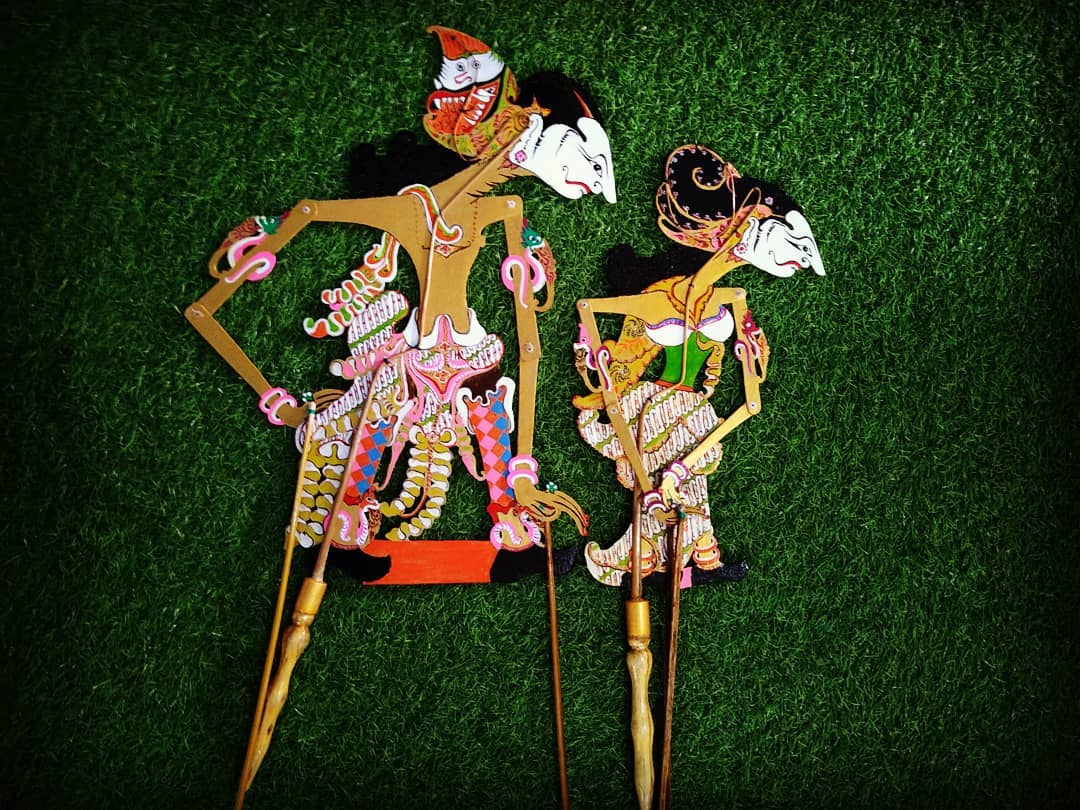
Wayang kulit puppets
Image credit: @wayangkakung.id
Wayang is a traditional form of puppet theatre play that originated from Java, and depicts anecdotes from Hindu epics such as the Ramayana and Mahabharata. Named after the Javanese word for “shadow”, wayang describes the style of performance where puppets appear and perform behind a thin white sheet, and are controlled by a dalang (wayang puppeteer). Audiences can watch the performance from both sides of the white sheet.
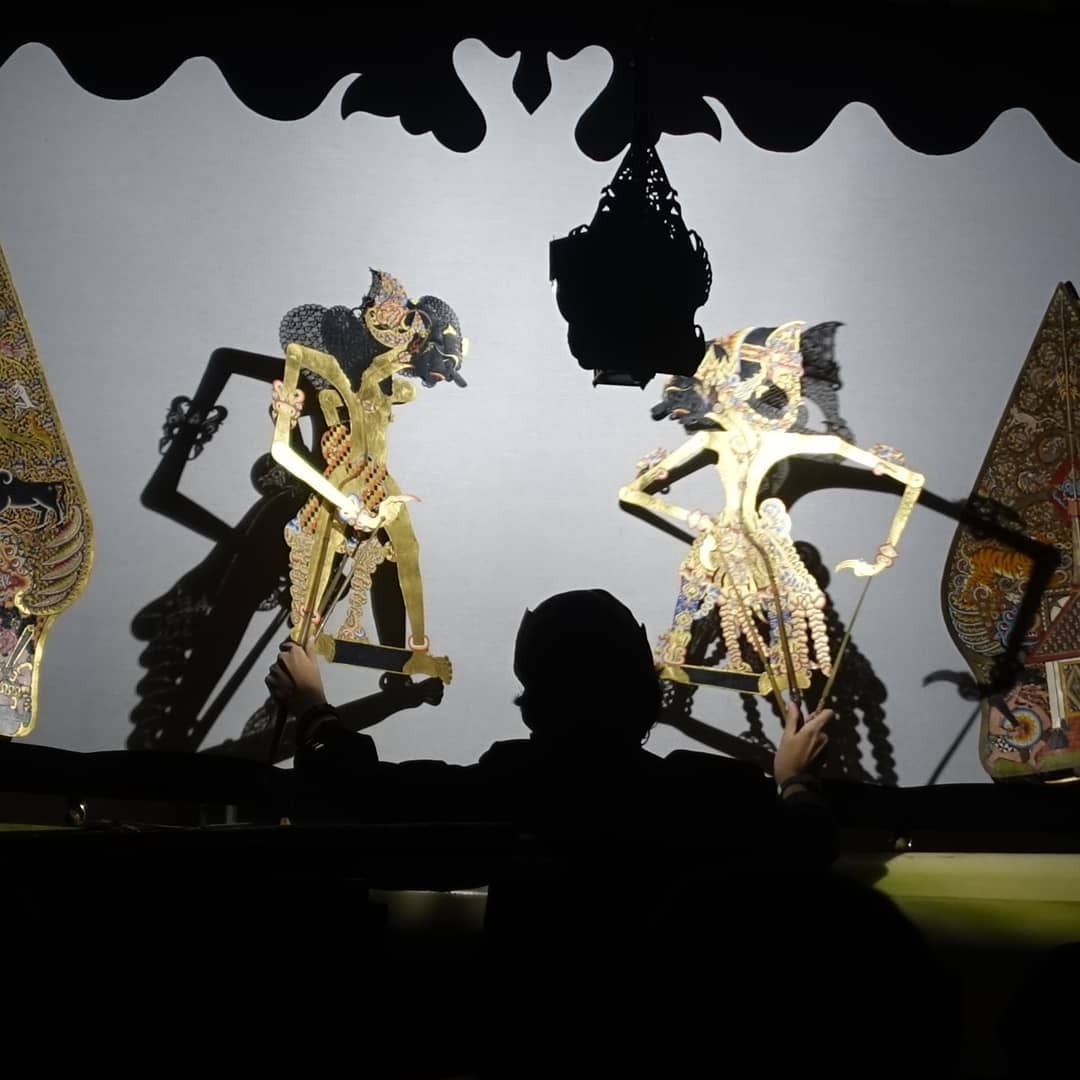
A wayang performance in action
Image credit: @tony_ekaputra15
There are many forms of wayang puppets, but the best-known one is called wayang kulit. Kulit means skin in Indonesian, and refers to the leather buffalo skin fabric used to make the puppets. These puppets are also strengthened with wood that is then painted to create the character of the puppet.
Back in the day, wayang kulit performances were done during wedding ceremonies, festivals, prayer rituals, and circumcision ceremonies as a form of entertainment. While wayang is still a prevalent part of Indonesian culture, today it is mainly seen at cultural tourism attractions.
To preserve this culture, the Museum Wayang Jakarta was established in 1975, and is still in operation for locals and tourists to visit. The wayang museum is located in the Kota Tua area in West Jakarta.
8. Jamu – traditional herbal medicine
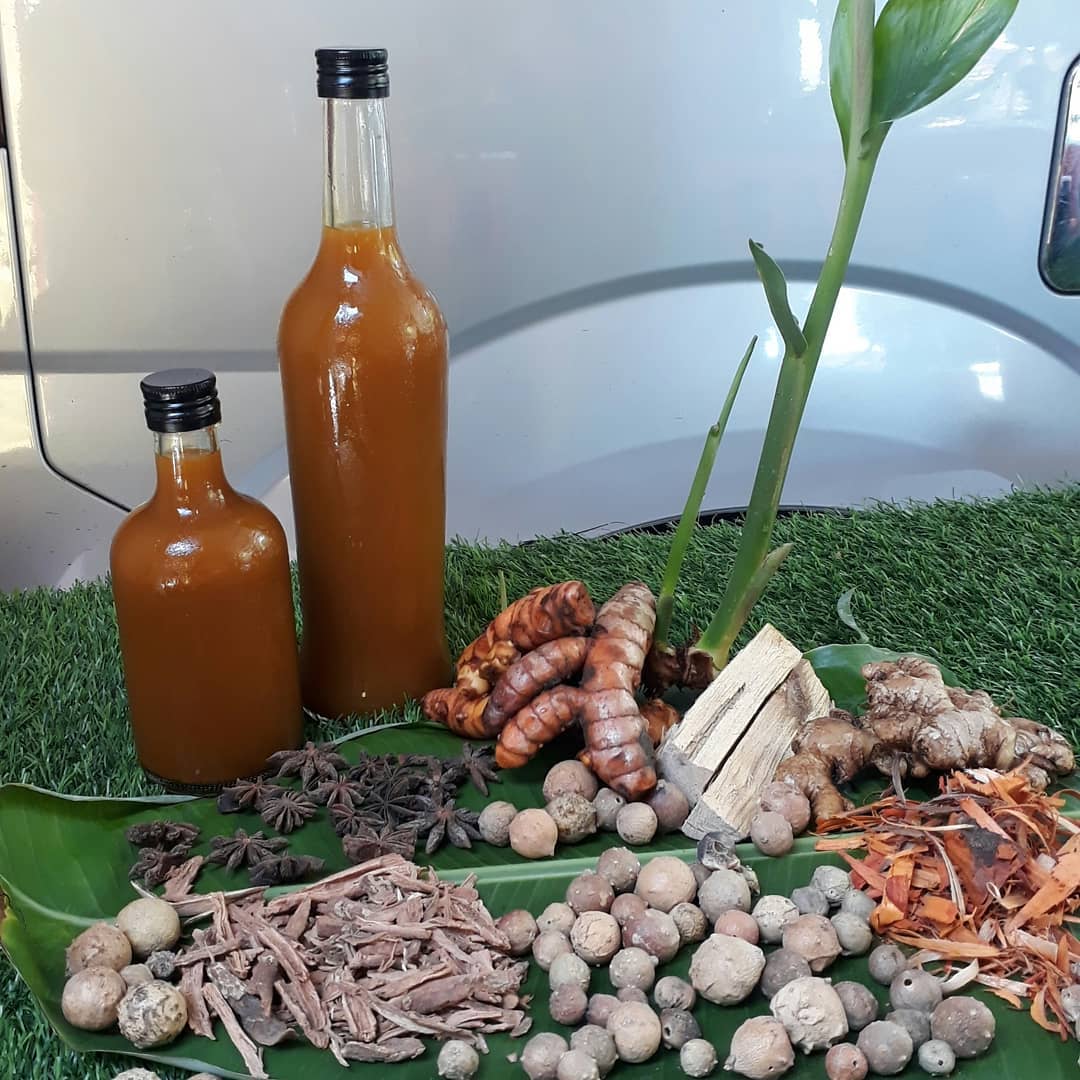
Some ingredients of jamu – turmeric, ginger, and galangal
Image credit: @kedaiacc1511
Jamu is a traditional herbal medicine made in the form of a drink that is made from natural ingredients, such as, turmeric, ginger, galangal, cinnamon, tamarind, and lemongrass, to name a few. It has been practiced and consumed for centuries in Indonesia, and is said to boost the immune system, and help with skin issues, diabetes, blood sugar levels, and inflammation.
The origins of jamu are said to date back to the Majapahit era where jamu was made and prescribed to kings and queens to help improve their health. The tradition of jamu has stuck on, and today many locals prefer to have jamu rather than going to the doctor, as it is said to heal the body in a more natural way.
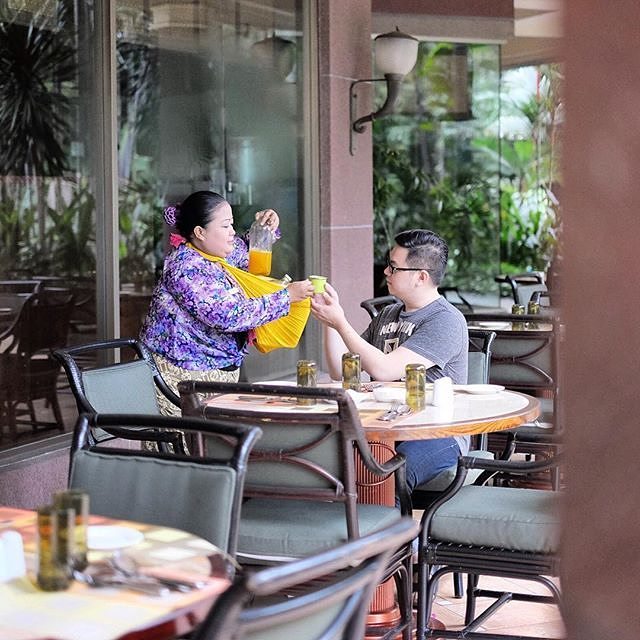
A Mbok Jamu selling her jamu to a customer
Image credit: @vickyyuwono via @shagrilasub
What makes jamu unique is not only its raw and traditional ingredients, but also the way it is sold. Although jamu can be found all over the country, it is most prevalent in Java, and is usually sold by a Mbok Jamu – one of many middle-aged Javanese women carrying a basket on her back filled with bottles of jamu. These ladies usually travel across towns and villages offering this herbal drink.
Jamu is said to be heavily influenced by India’s ayurveda which shares the same concept of improving health through traditional herbs. However, there are differences in the ingredients, and ayurveda uses healing through energy such as massages, meditation, and yoga to balance the body’s energy, whereas jamu is consumed and doesn’t have physical practices similar to ayurveda.
More recently, coffee brands such as Fore Coffee have been introducing modern jamu blends to appeal to the young. Read more about them here.
9. Salak – snake fruit native to Java, Sumatra, and Bali
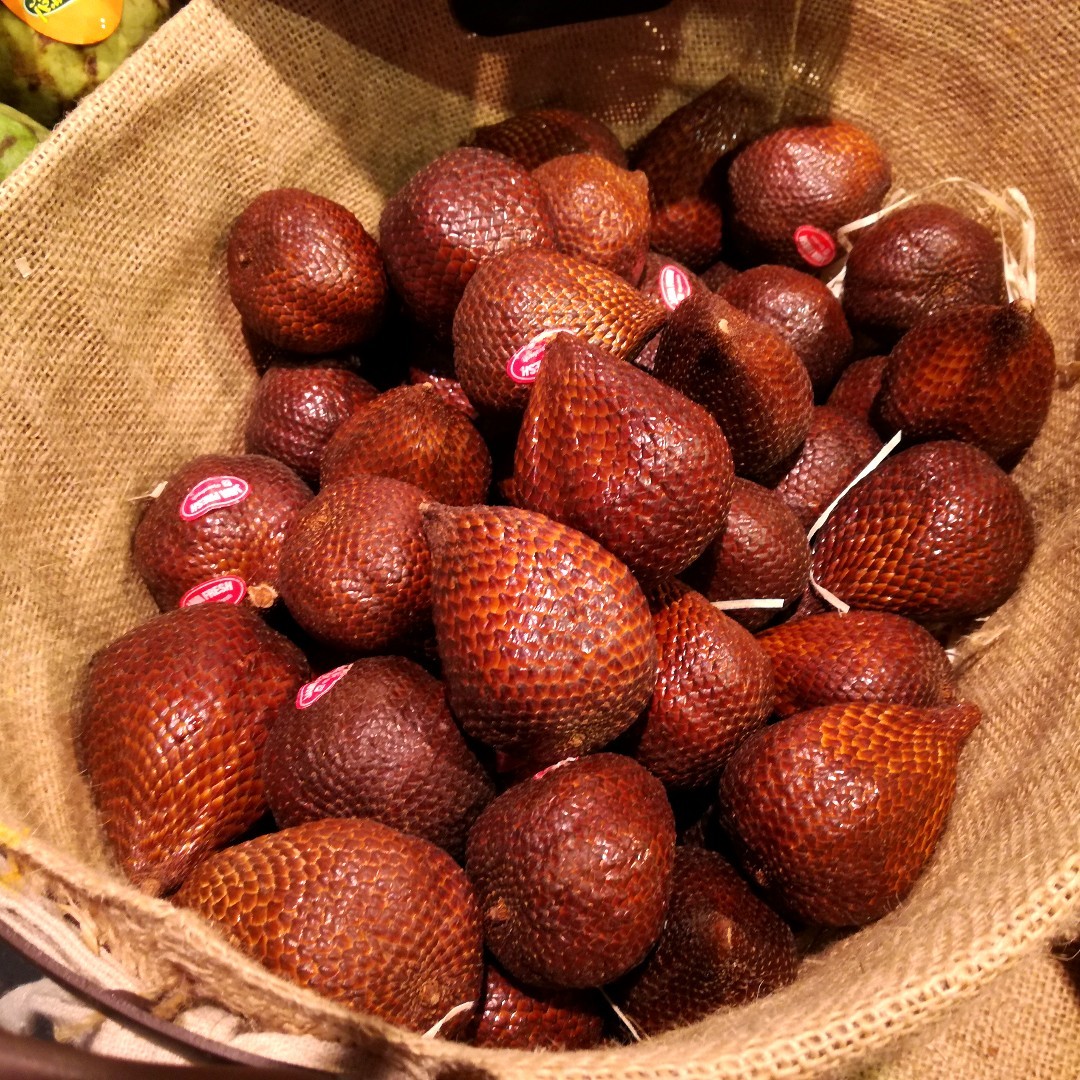
Image credit: @kulinarikweltenstengel
Commonly known as salak in Indonesia, the Salacca zalacca fruit is native to the islands of Java, Sumatra, and Bali. It is also widely known as snake fruit for its brown scaly skin that resembles the skin of a snake.
Only the cream-colored pulp of the salak is edible, but watch out for its inedible large seed within. Interestingly, the fruit’s pointy tip makes it easy to peel off the hard scaly skin without the use of kitchen equipment.
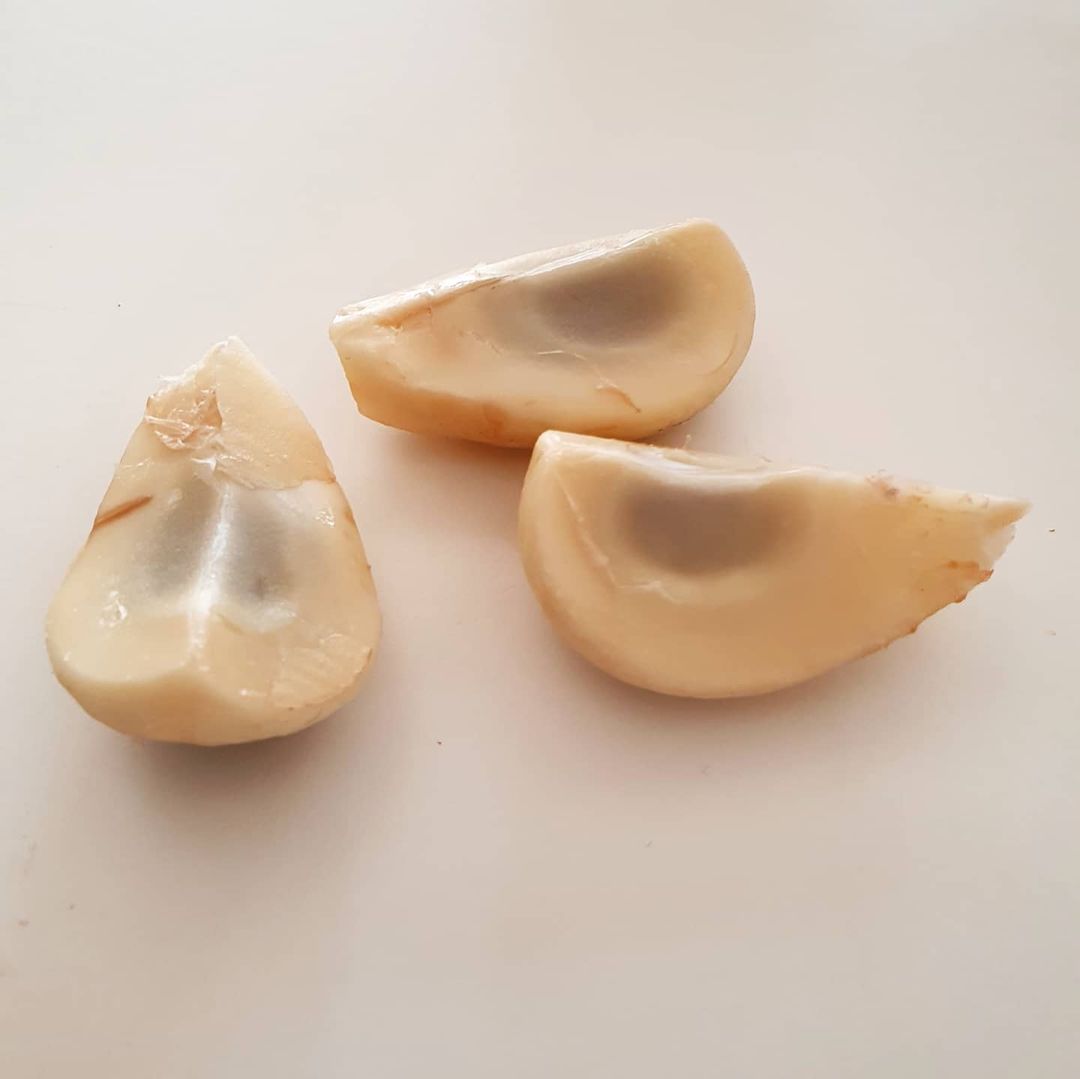
Pulp of the salak with visible inedible seed inside
Image credit: @paradiseofanja
The pulp of the salak tastes sweet with a hint of sourness, and has a dry, crunchy texture. Although salak is native to Indonesia, it is also grown in Thailand, though Thai salak has a slimmer shape and darker pulp. One kilogram of Indonesian salak costs from Rp.15,000 (~USD 1.03), and can be easily found in supermarkets.
10. Komodo dragons – the world’s largest lizards

Image credit: @kabutsky
Indonesia is home to komodo dragons which are also known as the world’s largest lizards, as they grow to a length of 3 meters, and can weigh up to 70kg. They are found in the Komodo National Park located within the lesser Sunda islands such as the Komodo, Padar, and Rinca islands.
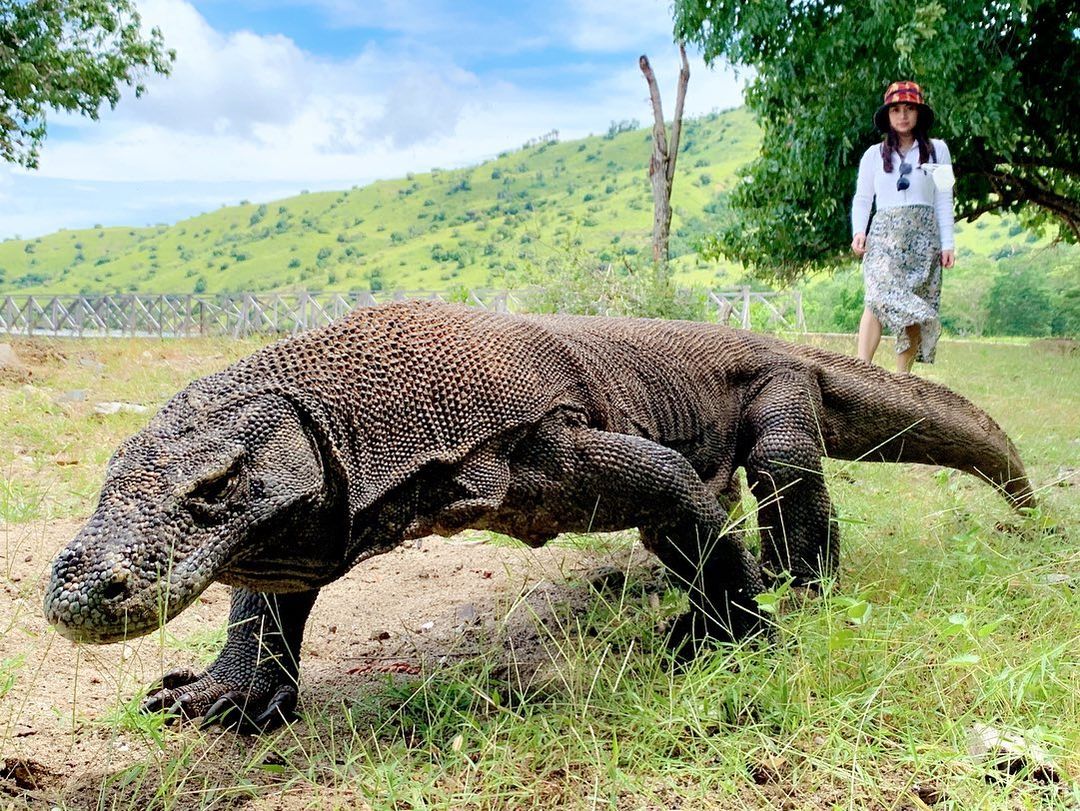
Image credit: @d_nw05
Due to their large size, they dominate their ecosystem, and prey on invertebrates, birds, mammals, and even humans. Despite their life expectancy of up to 30 years, Komodo dragons are listed as a vulnerable species today due to habitat destruction, natural disasters, and the widespread hunting of lizards.
To avoid their extinction, Komodo dragons are now protected under Indonesian law, and are preserved within the Komodo National Park.
Unique etiquette facts about Indonesia
Apart from the listed facts, in order to experience Indonesia like a local, it’s useful to understand the local cultures and beliefs that will help you break the ice with residents and have a smooth experience. Here are some tips:
- Use your right hand over your left. Indonesians consider using the left hand for most things to be disrespectful, as the left hand is typically perceived to be used to clean oneself after going to the toilet. Hence, when shaking hands, or giving something to others, Indonesians always use their right hands. If you are unable to use your right hand for any reason, you can use your left hand but add a quick ‘sorry’ while doing so.
- Say ‘terima kasih’ generously. Indonesians are accustomed to saying thank you, or terima kasih, for everything. Be generous in saying thank you, whether it be asking directions from a stranger on the road, or when you’re ushered into a restaurant by a waiter.
- Use titles to address people. There are many titles in Indonesia to address someone older, younger, informally, and formally. Communities in different parts of Indonesia have their own way of addressing people, but if you are in the capital, you can use mba to address a lady, and mas to call a man. In Bali, the term Bli is used to address a man, irrespective of the age. Whereas, formal titles such as Bapak and Ibu can be used anywhere in the country, and are usually used to address the elderly.
Unique things and people only in Indonesia
Indonesia is home to 17,508 islands, 34 provinces, with over 700 local languages spoken, and has many more unique and quirky facts that are not widely known. So if you do plan to visit Indonesia, it is worth exploring other islands and attraction sites apart from Jakarta and Bali to learn more about the local ways of life.
Also check out:
- Basic Indonesian phrases for travellers to know
- Unique mosques in Indonesia
- Museums and galleries in Jakarta
Cover image adapted from @kaktopan, @senibudayabetawi, @d_nw05
Enjoying The Smart Local Indonesia? Follow us on Facebook, Twitter, Telegram, and Instagram for more stories like this. If you have a story to share, email us at [email protected].
